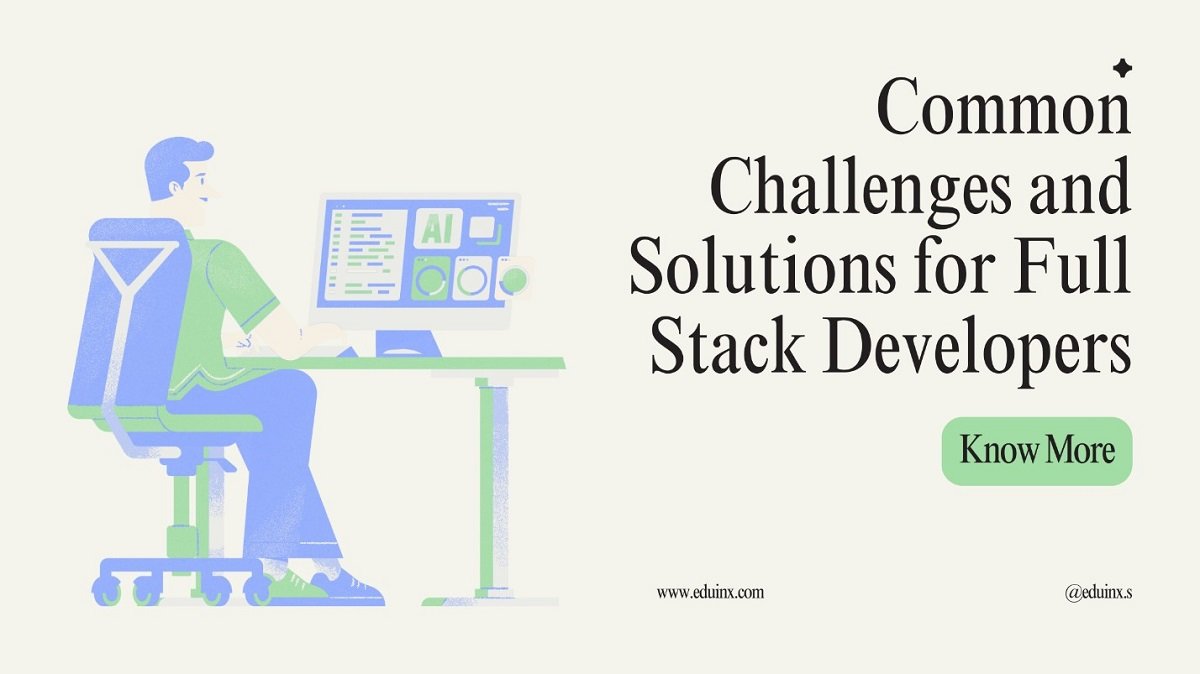
The full-stack developer role is coveted for its versatility and comprehensive understanding of the software development lifecycle. However, the path to mastery is not without its hurdles. Juggling multiple technologies, managing complex systems, and staying ahead of the ever-evolving tech landscape are just a few of the challenges full-stack developers face.
Full-stack developers wear many hats, requiring proficiency in a diverse range of technologies. From front-end languages like HTML, CSS, and JavaScript to back-end languages like Java, Python, or PHP, and frameworks like Spring, Django, or Node.js, the list can be daunting.
Start with a strong foundation in a core language like JavaScript or Python. Gradually expand your skillset by learning frameworks and libraries relevant to your chosen language.
While frameworks and libraries simplify development, a solid grasp of underlying programming principles is crucial for troubleshooting and long-term growth.
It's impossible to be an expert in every technology. Focus on mastering a few core technologies and stay updated on industry trends to identify when to learn new ones.
A successful full-stack developer needs to excel in both front-end and back-end development. The front-end focuses on creating user interfaces, while the back-end handles server-side logic and data management. Striking a balance between these two aspects can be challenging.
Initially, prioritize one area to gain a deep understanding of its intricacies. As you progress, gradually expand your knowledge into the other area.
Utilize front-end frameworks like React or Angular and back-end frameworks like Spring or Django to streamline development and ensure code consistency.
Collaborate closely with team members specializing in each area to ensure seamless integration between front-end and back-end components.
The tech industry is constantly evolving, with new frameworks, libraries, and languages emerging regularly. Staying updated on these advancements is crucial for maintaining a competitive edge.
Make learning a permanent part of your professional journey. Attend conferences, workshops, and online courses to stay informed about the latest trends.
Follow influential developers and publications to stay abreast of industry news and best practices.
Participating in open-source communities allows you to collaborate with other developers, learn new technologies, and stay at the forefront of innovation.
Full-stack development often involves debugging issues that span both the front-end and back-end. Identifying the root cause of a problem can be time-consuming and frustrating.
Leverage browser developer tools and server-side debugging tools to pinpoint the location and nature of errors.
Implement comprehensive logging practices on both the front-end and back-end to track application behavior and identify potential issues.
Break down the problem into smaller components and systematically test each layer to isolate the source of the error.
Scope creep refers to the addition of new features or requirements to a project after development has already begun. This can lead to delays, budget overruns, and frustration for developers.
Establish clear and well-defined project requirements with stakeholders before development commences.
Agile development methodologies like Scrum allow for iterative development and continuous adaptation to changing requirements.
Maintain open communication with stakeholders and clearly communicate the impact of any proposed changes on project timelines and resources.
With responsibilities spanning both front-end and back-end, maintaining consistent coding practices across the entire codebase can be challenging.
Define clear coding conventions for all developers to follow, ensuring code readability and maintainability.
Implement code review processes to identify potential issues and ensure adherence to coding standards.
Automate repetitive tasks like code formatting and linting to enforce consistency and reduce manual effort.
The full-stack developer journey is a rewarding one, but it's not without its challenges. By understanding the common roadblocks and implementing the strategies outlined in this blog post, you can effectively navigate the complexities of full-stack development and emerge as a well-rounded and adaptable developer. Remember, continuous learning, effective communication, and a systematic approach to problem-solving are key ingredients for success in this dynamic field.
Name: Sakshi Agrahari
LinkedIn